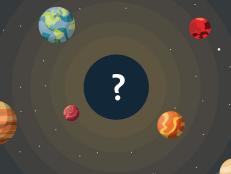Articles
Showing 736 - 750 of 2,630 results
Curiosity Daily Podcast: Nudge Theory’s Dark Side (w/ Richard Thaler), Hybrid Fruit Science, Words for “Pirate”
Learn about how to avoid getting dragged down by “Sludge”; how hybrid fruit like plumcots are made; and pirate parlance.
Curiosity Daily Podcast: The First Telepathic Brainstorm, Ghost-Creating Toxic Mold, and Cropsey: the Real Boogeyman
In this Halloween episode, learn how scientists were able to get three people to communicate with each other using only the power of their brains, and why toxic mold might make you see ghosts. Plus, hear the story of “Cropsey,” a terrifying boogeyman who turned out to be real.
Curiosity Daily Podcast: Why You Should Face Your Fears, Rekindling Romance with Cute Animals, and Naming Black Holes
In this podcast, Cody Gough and Ashley Hamer discuss the following stories from Curiosity.com to help you get smarter and learn something new in just a few minutes:
Curiosity Daily Podcast: Pop Songs Are Getting Sadder, Mysterious Radio Signals from Outer Space, and It Pays to “Just Be Yourself”
Learn about why pop songs are getting sadder; a mysterious radio signal coming from outer space every 16 days; and why it pays to be yourself when you’re in a high-stakes situation.
Curiosity Daily Podcast: Ingredients for New Friendships, Dark Matter Debate, and How to Make Decisions with Friends
Learn about the key ingredients for forging a friendship; why it’s so hard to make decisions with friends; and what it would mean if dark matter doesn’t exist and the law of gravity is wrong.
Curiosity Daily Podcast: Early Warning Birds, Ancient Fairy Tales, Breaks vs. Sprains
Learn about how birds could help us predict natural disasters; fairy tales’ old origins; and how breaks and sprains heal.
Curiosity Daily Podcast: Resilience Is the Key to Your Well-Being in a Constantly Changing World
It's hard to count on a world that's constantly changing. That's why it's vital to grow internal strengths like grit, gratitude, and compassion — at least, according to Dr. Rick Hanson, a Senior Fellow of the Greater Good Science Center at UC Berkeley and author of "Resilient: How to Grow an Unshakable Core of Calm, Strength, and Happiness." In this episode, he discusses the key to resilience, and to lasting well-being in a changing world.
Curiosity Daily Podcast: How Superstitions Can Reduce Anxiety
Learn how superstitions can actually reduce anxiety, why rebooting can often fix computer problems, and why the first full dinosaur skeleton ever found is finally being studied 160 years later.
What Would Happen If the Sun Disappeared?
You might be able to survive for a bit longer than you think.
Curiosity Daily Podcast: Anger Looks Guilty, Quantum Microscope, Good News About Cancer
Learn about anger makes you look guilty; a new quantum microscope; and why the fight against cancer is going very well.
Curiosity Daily Podcast: Spontaneous Human Combustion, Your Terrible Creep Radar, and Employee Honesty
Learn about why your creep radar is probably terrible; the science of spontaneous human combustion; and the one belief that determines employee honesty.
Curiosity Daily Podcast: How Blind People Describe Animals, Plague Myths About “Ring Around the Rosie,” and Radiation Shields Made from Fungus
Learn about how blind people can describe what animals look like, how “Ring Around the Rosie” probably doesn’t reference the Plague, and why scientists used Cladosporium sphaerospermum, a radiosynthetic species of fungus, to build a radiation shield.
Curiosity Daily Podcast: We May Have Already Found Aliens (w/ Mike Wall), Arrow Method for Productivity, and ADHD Creativity
Learn how ADHD could make you more creative, and how to boost your productivity by scheduling your week with the Arrow Method. Plus, Mike Wall, author of “Out There: A Scientific Guide to Alien Life, Antimatter, and Human Space Travel (For the Cosmically Curious),” explains why we may have already found aliens.
Curiosity Daily Podcast: How LEDs Work (w/ LED Pioneer George Craford)
Learn about the “birthday paradox.” Then, George Craford — one of the pioneers of LED lighting — talks LED innovation.
Thomas Edison and Henry Ford Were Both Iconic Inventors and Best Friends
These two men are the ultimate friendship goal.










